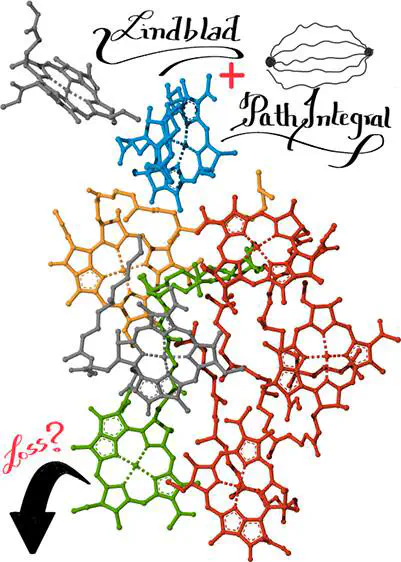Incorporation of Empirical Gain and Loss Mechanisms in Open Quantum Systems through Path Integral Lindblad Dynamics

Abstract
Path integrals offer a robust approach for simulating open quantum dynamics with advancements transcending initial system size limitations. However, accurately modeling systems governed by mechanisms that do not conserve the number of quantum particles, such as lossy cavity modes, remains a challenge. We present a method to incorporate such empirical source and drain mechanisms within a path integral framework using quantum master equations. This technique facilitates rigorous inclusion of bath degrees of freedom while accommodating empirical time scales via Lindbladian dynamics. Computational costs are primarily driven by the path integral method with minimal overhead from Lindbladian terms. We use it to study exciton transport in a four-site Fenna–Matthews–Olson model, examining the potential loss of the exciton to the reaction center. This path integral Lindblad method promises an enhanced ability to simulate dynamics and will be fundamental to simulation of spectra in diverse quantum processes in open systems.